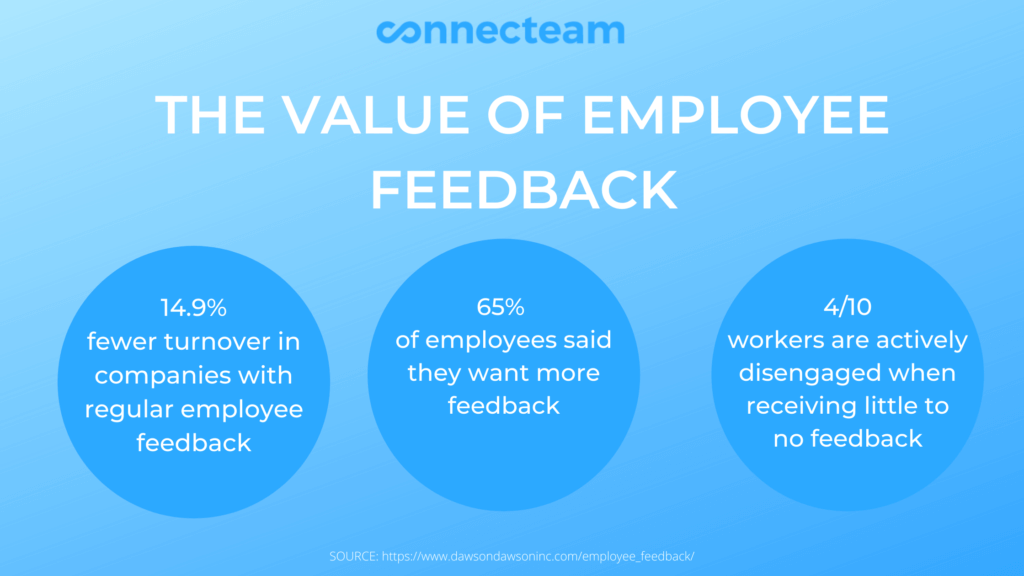There seems to be a new “hot topic” that many business owners are taking note of – workplace democracy. But what is it really and why should we care? Well, that’s what we aim to answer.
What is workplace democracy? It is when democratic practices are put into action in the workplace, like voting, debate, and a participatory decision-making system. Or in other words, workplace democracy is when our employees feel like “owners”.
Why is workplace democracy important? Because it engages employees more and according to a 2018 Gallup poll, 53% of workers are not engaged in their job. And why should that matter? More engagement leads to earnings-per-share growth that is actually more than four times that of their competitors, says Gallup. On top of that, more engaged employees lead to better customer engagement, higher productivity, better retention, fewer accidents, and 21% higher profitability.
Let me guess, you now want us to share some workplace democracy examples so that you can start to implement this mindset in your company’s day to day operations. Well, let’s get started by reading through our 10 tips on how to create workplace democracy.
Be Transparent
Your employees will be happier and will be far more trusting if they are aware of what’s going on, even if it’s just sharing a sales win or positive customer reviews – keep them in the loop at all times.
Glassdoor goes on to say, “Workplace transparency is proven to breed long-term success. Done well, transparency creates trust between employers and employees, helps improve morale and lower job-related stress while increasing employee engagement and boosting performance. And being transparent costs nothing, which gives it an exceptional ROI.”
Transparency includes top executives sharing critical or new company information with the entire team or individual employees sharing feedback among one another. Granted, this can even extend to sharing information with the customers or the public.
However, don’t just blurt out whatever comes to mind. Instead, remember that knowledge is power, as such transparency, truth, and openness allow for an effective spread of knowledge that will empower the people around you so you can work better together.
Gather Feedback From Your Employees
Create an open dialogue with your employees and them with you. On a regular basis, make sure you are asking your employees about their concerns, questions, ideas, and thoughts. It doesn’t matter if what they have to say is a small matter or a new idea, everything needs to be brought to your attention so that you can handle the situation accordingly. Your employees will be much happier and will feel appreciated if you listen and act on what they have to say.

However, “supervisors develop selective hearing when it comes to feedback,” according to research published by the University of Texas at Austin. The same study explains that managers have a tendency to listen to employees they’re more personally comfortable with or employees that have been employed longer. As such, the employees who are not heard suffer from lower performance reviews and the company culture is negatively impacted.
A method you can use to avoid these unconscious biases is through employee feedback surveys which allow you to gain feedback more regularly and fairly. Or you can even send a live poll through Connecteam’s employee communication app.
Avoid A Hierarchy
Here’s the thing, no department is more important than another. It shouldn’t matter if the sales department is bringing in all the money. Why? Because it is no less important than marketing, accounting, human resources, or even reception. Without all your departments, your company just couldn’t function properly so make sure you’re treating each department equally and fairly.
Delegate Responsibility
Workplace democracy is all about delegating responsibility, actually, that’s democracy in general. Be clear on who needs to accomplish what task so that everyone knows what they are responsible for and nothing falls between the cracks.
In addition, delegation allows an employee’s skills and ability to shine while they also gain a feeling of importance. In turn, the employee is more motivated to execute their job role and your workplace democracy is more sound.
If that’s not enough to convince you then maybe knowing that a Gallup study found that companies with strong delegators gained a higher overall growth rate than companies with managers who delegated less.
Hold Employees Responsible When Things Go Wrong
Naturally, when you delegate responsibility, you have to hold that person responsible if something should go wrong. However, don’t let it become a public execution. Instead, talk with that employee privately to avoid embarrassment.
If can help you and your employee to meet face to face without pressure so you can clearly outline the task and what’s required for success. It isn’t enough to just explain what results are required but also tell the employee why you chose them as this can lead to better workplace democracy. Remember it’s not about checking off tasks but delivering outcomes so ensure the employee understands what’s deemed a success and what’s a failure. By encouraging a dialogue, you can ensure two-sided responsibility.
SHRM recommends that you “follow up and provide coaching and guidance if needed”.
Forgive Failure
Yes, you do need to hold people responsible, however, you also need to forgive failure if you want your employees to grow. When employees have the chance to fail gracefully, they will learn from their mistakes and will only be better for it going forward. This will create a bigger sense of loyalty to the company and happiness to keep doing their job and doing their job well.
Recognize Employee Achievement And Success
When an employee achieves something wonderful, don’t hide it. Be sure to share his/her success with everyone, this will engage them more and will make them feel like a part of something wonderful. Whether you mention their success at a team meeting, send an email, post on a bulletin board, share on social media, or throw a party, just make sure you are *doing* something. When an employee sees their co-worker receiving praise and recognition, they will work to get that same attention.
A study shows that companies that invested in employee support and satisfaction had happier employees. Additionally, How Full Is Your Bucket found that employees who receive frequent recognition often experience higher productivity, more engagement, better loyalty to the company, and better customer satisfaction.
And the numbers keep coming:
Research shows that employees were 103.4% more likely to feel supported by their organization, and 58.6% more likely to trust their leader after being recognized within the last 7 days.
With data like this, it is clear how valuable employee achievement and success is to workplace democracy.
Offer More Flexibility And Freedom
Let your employees go home earlier or come in a little later. Let your employees work from home for some days. Offer a casual dress day once a month or on a set weekly basis, like a Friday. As long as your employees are getting the job done and are not abusing their freedom, everyone is happy across the board. Just make sure everything is clearly written out in your employee handbook so you can ensure no one is taking advantage of company perks.
Read more here on the benefits of establishing a flexible work schedule.
Set Leadership At All Levels
In order to keep things moving efficiently, you need leadership from the very top to the very bottom. It isn’t about having power but rather having someone in charge when the need arises.
Research shows that leadership at all levels doesn’t just lead to “gold medals” but also helps create stronger companies and stronger workplace democracy.
In addition, Medium highlights that “Although it is important for a single leader (or small group of leaders) to give the big-picture direction for the team or organization when individual contributors (IC’s) and more junior leaders (rising leaders) don’t take certain leadership actions, the team falls short of potential.”
Strict Policies Should Be Held At A Minimum
Make sure your company has principles everyone adheres to, however, ensure they’re flexible so that decisions can be made on a case-by-case basis. You need to look at what makes sense and not just what the principle or policy layout.
When you implement workplace democracy at your company, you are creating a company culture that works for everyone.
Create Workplace Democracy With An Employee App

Establish Communication
You must have an open line of communication if you want to boost productivity, improve morale, and lower your employee turnover rate. Employees should be able to come to you with any concern, bright ideas, and everything in-between. They expect the same from you as well and on a regular basis.
An employee app allows you to have an open-door policy across the board. Managers can instantly send a company announcement, an update, employee of the month celebrations, birthday and anniversary wishes, and more. And employees can reach management on any matter, no matter how big or small, which leads us to our next point.
Gain Feedback
As a business owner, you are constantly looking for ways to better your company – whether it’s a new product, a marketing strategy, how to boost morale, how to keep customers happy, and so on. You’re always on the hunt and your employees are your best asset to do so. Make it a habit to ask your employees their feedback on anything and everything.
An annual review just isn’t enough, use an employee app daily, weekly, or monthly to dish out surveys. Have a readily available suggestion box that anyone can use and on any matter.
Boost Employee Engagement
Using an employee app doesn’t just help streamline communication and make it easier to gain feedback, it also helps boost employee engagement. What’s the easiest way to boost employee engagement with an employee app? Send updates to keep all employees up to date on company matters, share with them a new campaign before they see it elsewhere (you don’t want them to hear something about the company from another source – where it’s the closing of a factory, a merger, or an exciting new product, your employees should hear it from you first).
Establish Transparency
Build trust and boost employee engagement, even more, when you are transparent with your employees on all company matters. For example, share the company KPI goals and the status of each one, share the company policies (like the salary) and share the contact information for management so that “lower” employees feel that the “top dogs” are reachable.
In addition, send updates on company news, employee recognition, birthday wishes, company anniversaries, and so on. It is all about being transparent, and through an employee app, you instantly know who read your message and who didn’t.
Reinvent workplace democracy with Connecteam
Reach every single member in your team, with fun, dedicated, and measurable communication. Engage your team like never before, reflect your company’s culture, and solidify your employer branding with Connecteam’s employee communication and engagement app.


![image of [Free eBook] Building an Effective Internal Communication Strategy](https://connecteam.com/wp-content/uploads/2020/07/Scene-4-768x512.png)

